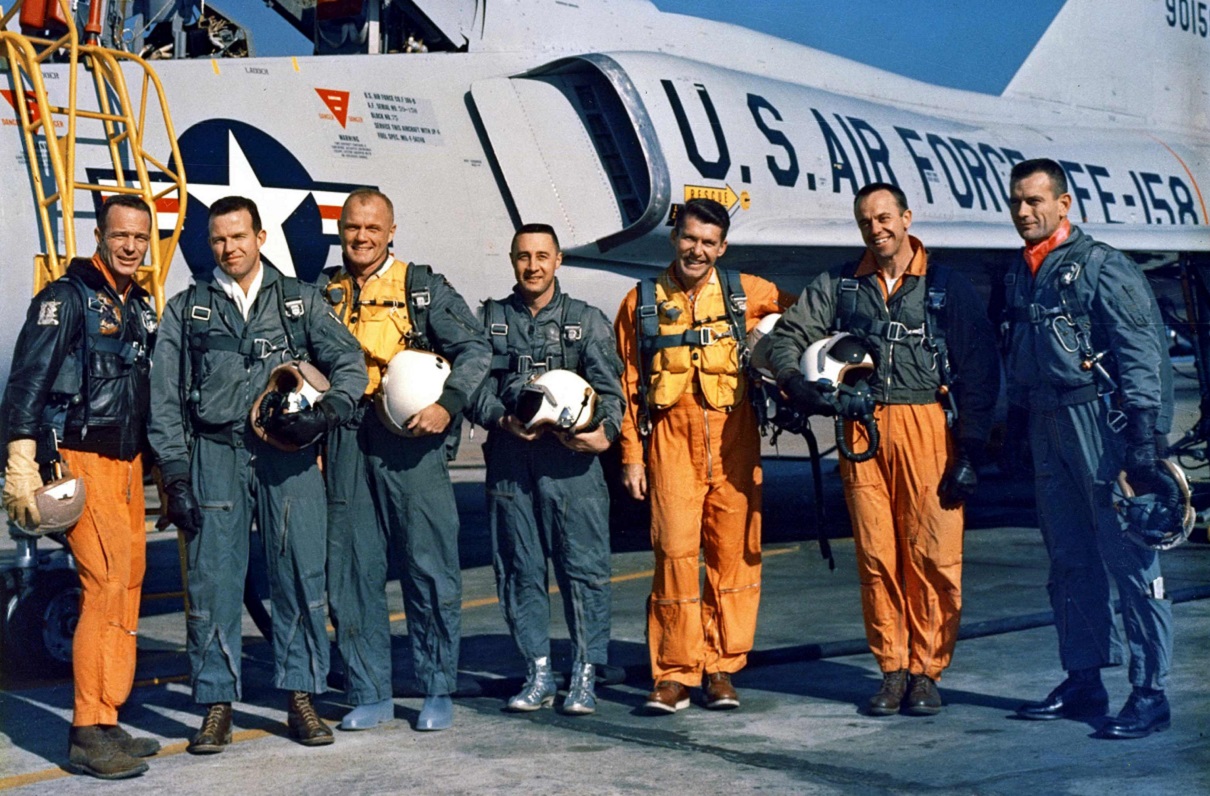By Don Vaughan
NASA announced its first group of astronauts, known as the Mercury Seven, April 9, 1959. Military pilots all, they were (from left) Malcolm Scott Carpenter, USN; Gordon “Gordo” Cooper Jr., USAF; John Glenn Jr., USMC; Virgil “Gus” Grissom, USAF; Walter “Wally” Schirra Jr., USN; Alan Shepard Jr., USN; and Donald “Deke” Slayton, USAF. Project Mercury's goal was to study the rigors of space flight in preparation for longer, more complex missions. The program performed six manned missions between May 1961 and May 1963.
The first Mercury mission, aboard Freedom 7 May 5, 1961, successfully put the first American - Shepard - into space. A second suborbital flight followed July 21, 1961, with Grissom at the controls. The flight was a success, but Liberty Bell 7 sank shortly after splashdown. The third Mercury flight, aboard Friendship 7, took place Feb. 20, 1962. Nearly five hours in duration, it made Glenn the first American to orbit the Earth. Three more missions followed, piloted by Carpenter, Schirra, and Cooper, respectively. Many of the Mercury Seven went on to participate in subsequent Gemini, Apollo, and space shuttle missions.
Said John Glenn of the Mercury Seven and the astronauts who followed: “We're not up there in space just to joyride around. We're up there to do things that are of value to everybody right here on Earth.”
Back to 100 Veterans, 100 Years: A Century of Stories You Should Know
